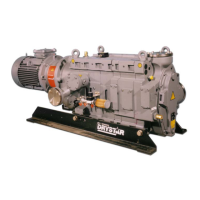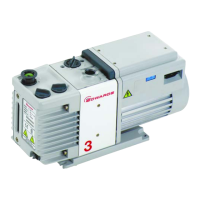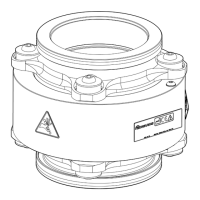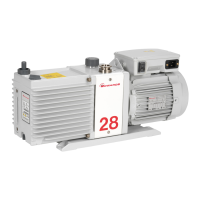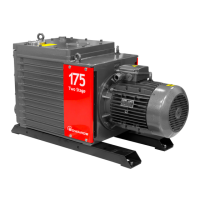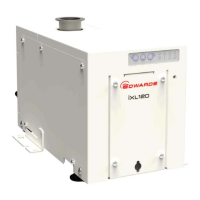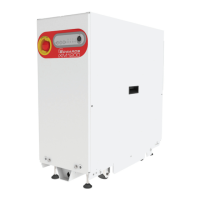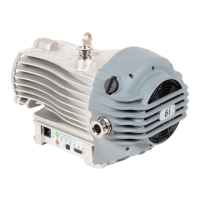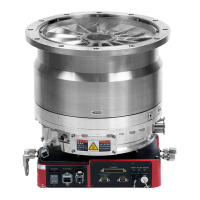A705-40-880 Issue B
Page 28 © Edwards Limited 2011. All rights reserved.
Edwards and the Edwards logo are trademarks of Edwards Limited.
Installation
3.10.2 Connect the pump-outlet to your exhaust system
Install an outlet catchpot to prevent the drainage of condensate back into the pump. If you do not, condensate
which drains back into the pump may damage it or cause it to seize.
Note: Flame arrestors suitable for use with the pump are available as accessories: refer to Section 7.4.
Use four suitable bolts to connect the pump-outlet to your exhaust system. Use a suitable PTFE gasket to seal the
connection. We recommend that you use the gasket type specified in Section 2.11.
Your exhaust pipeline system must be designed so that the pressure in the pipeline during pump operation does not
exceed the maximum outlet pressure specified in Section 2.2.
Incorporate flexible bellows in the exhaust pipeline to reduce the transmission of vibration and to prevent loading of
coupling-joints. If you use flexible bellows, you must ensure that you use bellows which have a maximum pressure
rating which is greater than the highest pressure that can be generated in your system.
3.11 Leak test the installation
Leak-test the system after installation and seal any leaks found. Substances which leak from the system may be
dangerous to people and there may be a danger of explosion if air leaks into the system.
The leak rate of the pump is tested to be less than (2 x 10
-6
atm ft
3
min
-1
) when supplied. The required leak rate for
your system will depend on your safety and process requirements.
Pipe the exhaust to a suitable treatment plant to prevent the discharge of dangerous gases or
vapours to the surrounding atmosphere.
Incorporate safety devices to prevent operation of the pump when the exhaust pipeline is
restricted or blocked. If you do not, the exhaust pipeline may become over-pressurised and may
burst.
Do not exceed the load limits on the pump-outlet flange as specified in Figure 5. If you do, there
will be a risk of leakage of process gases from the pump, or of damage to the pump.
Leak-test the system after installation and seal any leaks found to prevent the leakage of
dangerous substances out of the system and leakage of air into the system.
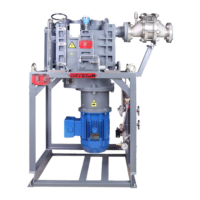
